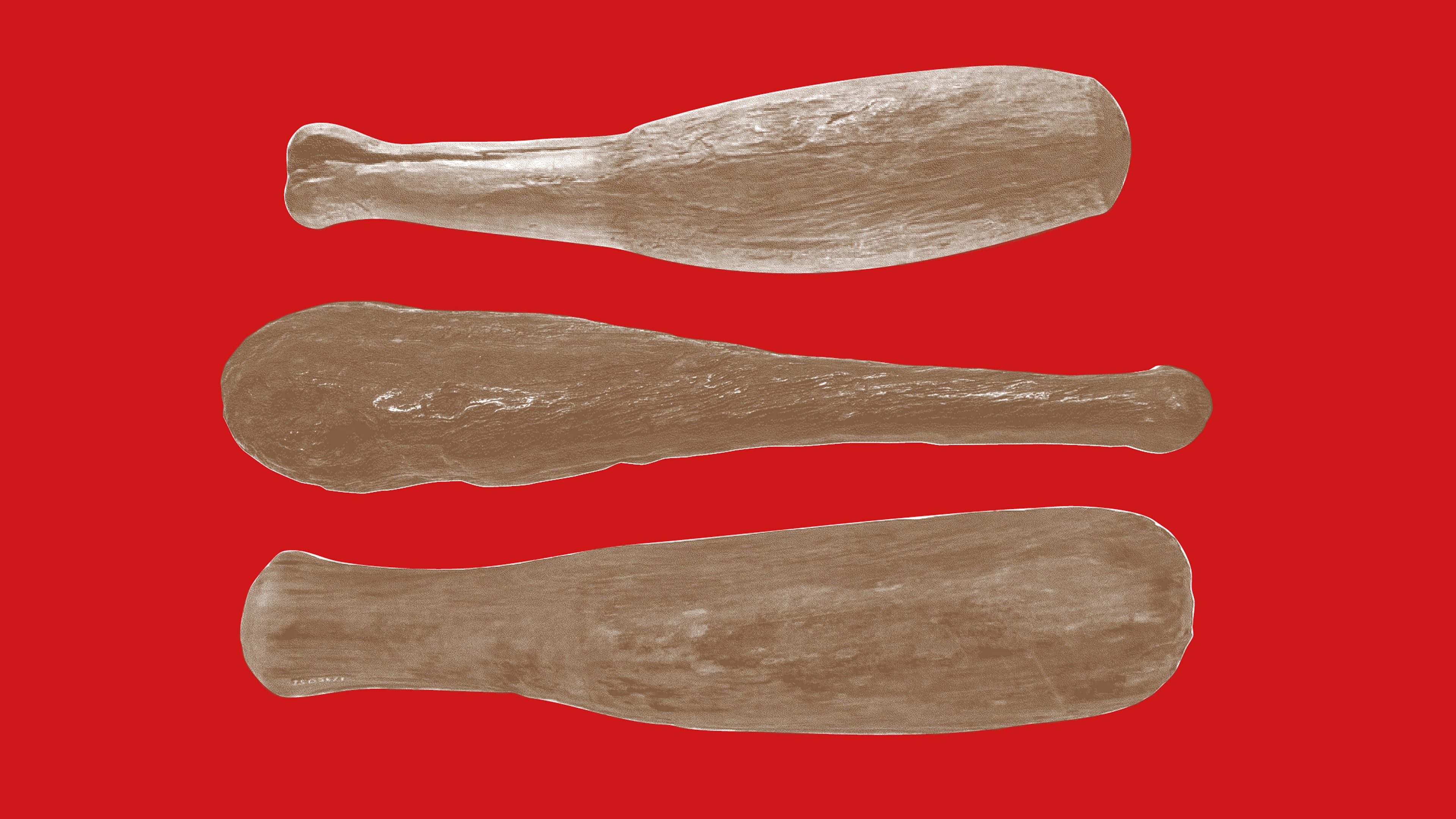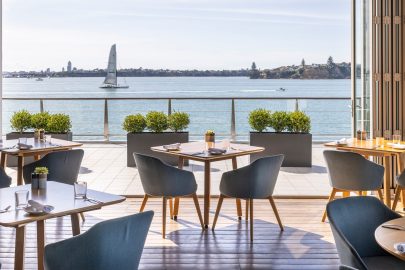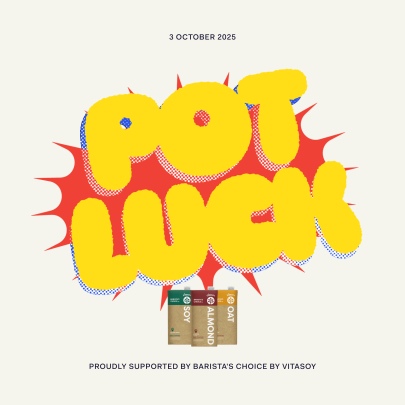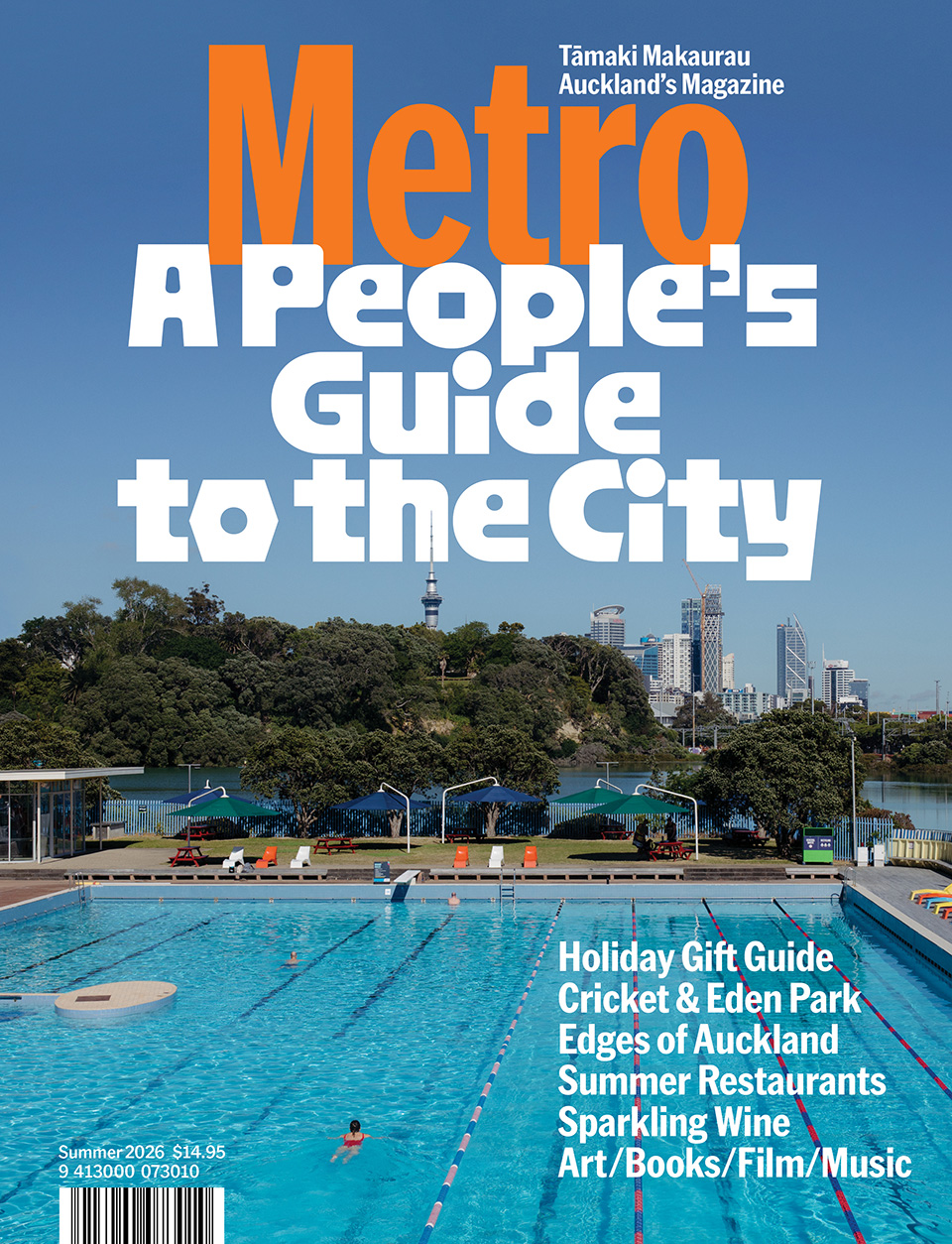Aug 7, 2025 Food
In the Māori world, bread exists on an unbridled spectrum. For me, the highlight of working in the kitchen on my marae — especially when Poukai, the annual series of visits by the Māori queen, reaches us — is eating fry-bread to excess. Once the manuwhiri are fed, the leftover food pours back into the kitchen and the kaimahi swarm. Anyone who works in these kitchens will testify that we don’t like to stop working until the job is done — it interrupts the flow of the labour, and it’s harder to find your rhythm again. But, when the time finally comes, a commercial tub of butter, golden syrup, a slice of parāoa parai and a cup of tea does the trick for smoko.
With fry-bread comes rēwana (also spelled rēwena), a Māori sourdough of which there must always be a surplus for manuwhiri on the table. There always seems to be a loaf or two in the kitchen at the pā, too, and these are often cut and distributed to various aunties. Rēwana bread is a staple at hui, paired with butter and jam. Bread sop has a lot of purchase with the nannies, too. Take a slice of rēwana, butter it, dunk it in your tea or plain hot water — that’s bread sop.
Then there’s pāpākiri, sometimes called takakau. This is like an unleavened flatbread or damper, and has endured since the arrival of flour on our shores. And in the non-bread category, we shouldn’t forget kororirori (also called rororirori or riripi), a porridge of boiling water and flour, and dough boys or motumotu, the Māori dumplings that are integral to a boil-up.
Put simply, bread, wheat and flour have become foundational to expressions of Māori culinary identity. Flour is now so integrated into Māori foodscapes that we forget it was introduced, and sliced bread in some form or other is the accompaniment to every meal. But these breads did not emerge from the oven unscathed: the tug of war for sovereignty is etched in the scoring of each loaf.
Before flour arrived in these islands, before the strain of potatoes we call rīwai fell off the back of the Endeavour in 1769, aruhe or bracken fern root was our everyday carb of choice. The versatility of aruhe in practice is matched only by its symbolism in poetry: mōteatea speak of aruhe as a metaphor for strength, consistency, vitality and nourishment. The process of preparing aruhe is consistent across this literature — “bruise” the fern root with a patu aruhe until supple, form into “cakes”, and dry in the sun, or by fire, or in hāngī pits. This method served to make a carcinogenic fern safe for human consumption; it was water into wine. Aruhe was, for all intents and purposes, treated as bread. It was abundant, nourishing and available year-round, forming an ever-dependable staple in a diet otherwise made up of yams, taro, the odd gourd, kūmara, all manner of kaimoana, tuna, karaka berries, tawa fruit, hīnau berries, pūhā, small birds, dogs, and pungapunga, a type of cake baked from raupō pollen.
The French, the Dutch and the English who washed up here — the ones we didn’t eat — observed and recorded our eating habits. Their responses to our diet vary. “Wretched”, wrote one of Jean-François de Surville’s officers, broadly and rudely describing both what we liked to eat and our entire way of life. I confess that if I had previously been familiar with only European bread — like James Cook, Marc-Joseph Marion du Fresne, William Bayly and the other note-taking observers — aruhe ‘bread’ might be a tough sell. But the accounts of these visiting observers ignore the very pointy end of the knife: the culinary prowess of Māori, which was about to expand into new and fertile fields.
The decades following the signing of Te Tiriti o Waitangi saw huge growth in Māori agriculture, and with it the acquisition of flour mills by tribes around New Zealand. The curious spread and success of these mills indicate a mastery of form, over an apparatus that had no existing equivalent within our tūpuna’s lives. The potato had its precolonial counterparts. So did maize. Wheat, however, was from another planet. And mills were a mode of agricultural technology unlike anything Māori had previously developed or encountered.
The shift to mill-ground flour in this period came about through efficiency and demand. Wheat was a hostile specimen to cultivate, but had unique tactical benefits. Two are obvious: the prospects of reliable food supplies and greater economic opportunities. But there was also a sense that dealing in wheat had the potential to strengthen relationships with missionaries and the government, and with those relationships came possible political advantages. And so, mills became something of a status item for iwi around Aotearoa in the 19th century. Put less kindly, as the Nelson Examiner reported, in the south of the North Island, mills were kept by hapū and iwi “as a showy plaything”.
The foundations for the Māori wheat industry were laid by Ngāpuhi rangatira Ruatara, who had sown and harvested the first crop of wheat in Aotearoa in 1813 and who obtained a hand-operated mill from missionary Samuel Marsden the following year. Things really began to take off following the 1846 construction of the first Māori-owned water mill at Aotea, near Raglan. Between 1846 and 1860, 37 Māori-owned flour mills were built in Auckland alone. In the Waikato in 1853, from Maungatautari to Rangiaowhia, at least 21 mills were in operation, under construction or proposed — harnessing the currents of our ancestral awa, which had long fed our communities, to process grain. By 1860, this number had more than doubled, with some areas boasting two mills. Rangiaowhia, for example, with two large-scale mills, was to be not just “Auckland’s granary”, but the nation’s.
Missionaries considered that the acquisition and construction of mills was a civilising tool. The requirement of continuous labour, needed to produce a profit and pay down the debt owing from the mill’s acquisition, went together, for missionaries, with the uptake of Christianity. Roman Catholic priests in the Wellington region were so committed to the idea that they took an active role in promoting the construction of mills and securing funding to do so. However, the majority of hapū in the lower half of the North Island had to raise mill-building capital themselves. A hapū in Ōtaki, for example, went so far as to form a company — divvying up shares between individual whānau members — to raise the money needed. Trade, in pigs, wheat and other produce, was the usual fundraising method. Where the capital of the hapū fell short, the Crown would offer loans, in what became known as the “flour and sugar” policy, the brainchild of Governor George Grey, Anglican missionary John Morgan and Donald McLean, Native Land Commissioner. Once the mills were installed, however, some missionaries became frustrated. “[Māori] do so little for the cause of God,” one whinged in 1849.
The productive and agricultural capacity Māori built was nothing short of remarkable. Rangiaowhia in particular, “New Zealand’s granary”, boasted “wheat fields as far as the eyes could see”, as Vincent O’Malley has written. Wheat flowed from these mills across the Tasman and even the Pacific Ocean, to the west coast of North America. The scale of production meant hapū could have their bread and eat it, too, feeding their people and securing enough surplus to carve out financial independence, to the benefit of the whole community. Mills also became a means of feeding manuwhiri attending hui, sometimes — as one horrified missionary in the Waikato reported — in excess. The application of cultural values such as rangatiratanga and manaakitanga, as they relate to land and production, lay behind the success of Māori-owned mills. Further, the monopoly on trade and industry that Māori enjoyed was of course an expression of sovereignty. At the same time, it was fertile grounds for settler envy.
The removal of any economic base has an atrocity of consequences. Processes of land alienation broke the reciprocal bond to the whenua that Māori have, and therefore the relationship to and with food and cultivation. The second half of the 19th century saw devastating changes. In the summer of 1855–56, little over a decade after most Māori wheat production began, prices in the local wheat and flour market collapsed. Demand plummeted. It also began to be apparent that some soils were becoming exhausted by the high suction of wheat. War brought ruinous changes, too. Some mills were deliberately destroyed by settlers during the invasion of the Waikato in the 1860s, and the “disturbed conditions” meant others fell into disuse. Worse still, the Crown began to wrest control of trade, shipping, company ownership and industry by placing restrictions around how hapū could participate in the economy that, predominantly, Māori had built.
Simultaneously, farming was incentivised for settlers, who were able to draw on public funds, and the general push towards a food system predicated on extractive values meant that Māori food practices were sidelined. This, and the sharp decline in wheat prices, created a crisis of debt, to the point that some whānau were forced to sell their land. Others had their land confiscated through raupatu. In conjunction with the land wars, a surge in government-assisted migration (reaching a historic height in 1874) saw Māori vastly outnumbered by settlers. Following the Waikato War, Pākehā mills began replacing the Māori operations that had previously populated the region. One of the most significant of these colonial mills, the Flourmill Store, established in 1871, still stands on the banks of the Waikato at Ngāruawāhia today. Where once mills may have stood as a symbol of pride, authority and economic independence for Māori, they now resemble a mausoleum of grief.
Some 20-odd years after the invasion of the Waikato, Lady Mary Ann Martin, a nurse (and wife of the first chief justice of the settler government, William Martin), wrote of her concerns for Māori health. Dysentery was plaguing Māori communities, she said, because of the “bad and insufficient food” that now constituted our diet. Lady Martin reported that the best of our limited produce was sold to settlers, and the remains — seed potatoes on which supply for the following year depended — were consumed. European imports like flour, pork, corn and potatoes were now firmly integrated into Māori diets. What little resources Māori did have were often pooled together, for hui, tangihanga and weddings; this feasting was considered disproportionate by settlers, and described as abominably wasteful. Commentators like Lady Martin believed that the current Māori diet, defined by its precarity, and existing food practices premised on manaakitanga were killing Māori and thus required active intervention. That the Māori population was “rapidly decreasing” and would soon “disappear entirely” suggested death was the natural consequence of poor diet. And the blame for this situation was ascribed to Māori, rather than the impoverishment of Māori that the colonial project necessitated and enacted.
Lady Martin took her self-appointed duty to intervene in “the Māori situation” seriously, publishing New Zealand’s first cookbook. He Pukapuka Whakaatu Tikanga mo nga Rongoa mo nga Kai (‘A Book of Medicine and Kai’) was released in 1869. Lady Martin had been brought up in an evangelical household and was friends with the country’s first Anglican bishop, George Selwyn, and the cookbook she produced was anchored in a civilising mission. This mission extended to education, where Lady Martin influenced a curriculum for Māori girls that stressed capabilities in the domestic sphere. The need to shift from ‘bad’ food to ‘good’ food was emphasised. Fermented foods like the fantastically odoured kānga pirau (rotten corn) were viewed as a contributing factor in poor health outcomes and vigorously discouraged. Instead, Lady Martin included in the book five recipes she viewed as critical to improving diet, rēwana parāoa being one. (The ultimate origins of this bread are unclear, though printed recipes for it exist from 1862.) Bread made from wheat or maize flour was a critical tool in the efforts to civilise the Māori palate.
Ideas about what constitutes good food are always shifting. Our diet, once one of subsistence reliance, has changed over time and with it so, too, have our conceptions of good food. But these shifts are not innocuous; to think they could be is to pretend that food is not just politically neutral, but altogether barren. The throughline here is disdain for difference, but also an assumption — derived from what we ate and how we ate it — that Māori had no values at all. A diet devoid of values must come from a culture bereft of value, thus becoming a blank slate on which outsiders might import and project their own. But despite this, Māori continued to claim agency while elsewhere it was being taken: by choosing what we would adopt and how we would prepare it; devising new forms of cooking; and applying old forms, like fermentation, to new ingredients, like corn. Aruhe, pungapunga — our breads and cake — are links in a culinary whakapapa that has been nurtured for generations.
Though Lady Martin and others had committed themselves to civilising us through food, we returned to what we knew. The revival and celebration of traditional recipes and cooking practices that began in the 1970s were spurred on by the broader Māori renaissance. Since then, Māori have continued to reconnect with te ao Māori by re-Indigenising our plates. Over time, kai Māori has continued to evolve — reshaping and reimagining itself in response to new contexts, as it always has. Yet amid these transformations, one thing has remained remarkably consistent: recipes for Māori breads. Rēwana, in particular, has changed little over the decades. Today, versions of rēwana can be found on the shelves of supermarkets like Pak’nSave and New World. There are rēwana champions around the motu like Vonz Kaukau, who bakes and sells to his community rēwana made from a life-changing kūmara ‘bug’ or pre-ferment starter, and George Jackson of Whanganui, whose rēwana was included in Unesco’s global Breads of the Creative Cities project, which documents and promotes bread-making traditions and cultures. Unleavened bread — pāpākiri or takakau — endures as a firm favourite, as does the ever-popular fry-bread. Dough boys still bob at the surface of most boil-ups, and the making of kororirori continues a legacy of ancient Polynesian pudding traditions based on starchy concoctions.
The demands of colonisation involve a supplanting of values. From the outset, from first contact, Māori diets thoroughly challenged Eurocentric conceptions of ‘good’ food. It was impossible for the settlers to conceive of a culinary tradition that prioritised ongoing symbiosis, not ruthless extraction, in its relationships to land and water. The emerging colonial economy had no compatibility with such values — ‘empty’ land is idle land, and idle land is empty pockets. Land used for wheat for flour for bread is no exception. But while the imposition of imported values was dominant for a long time, to suggest this process flowed only in a single direction is a mistake.
The values inherent in our different breads reveal much about who we are as Māori; about how we came to know what we know; about our relationships to each other and the natural world. We made bread without flour. We learned when to harvest, attuned ourselves and our diet to the rhythms of our surroundings. We understood how to prepare food safely — the methods and timing needed. As the landscape changed, we grew and adapted our diets. Kept the people fed, scraped together food without land. We survived. Māori food is not ‘good’ food — it’s great food. It doesn’t need to be anything other than what it is: remarkable.
Bread may have been subsumed into our diet, but the values we kneaded into it are our own.






